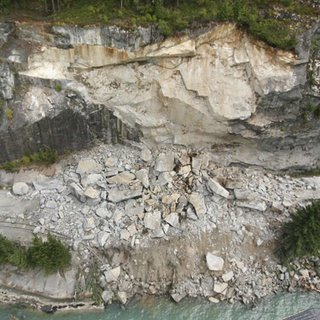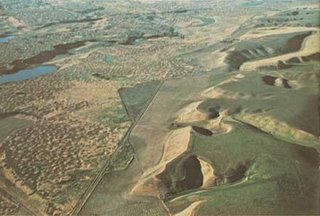Al Gore's Ignorant Plan to Re-Power America
 This is Albert Gore, Jr.'s, best yet. He is so ignorant at this point that you have to wonder ... never mind.
This is Albert Gore, Jr.'s, best yet. He is so ignorant at this point that you have to wonder ... never mind.Gore challenged you to do the impossible. But he had good intentions; he must always be judged by his intentions, never on his results. We will look at calculations of the cost below.
But the biggest problem with generating all of our electricity from wind, solar and geothermal is time of day. Wind and solar are fickle. They vary by cloud cover, time of day and other factors. Solar is limited to daylight hours; wind is stronger during the daylight hours because heat from the Sun causes variable heating and hence wind. They are fickle during the day and very limited at night. So turn your lights on during the day and off at night. That's Algore thinking. Update: some areas have more wind at night, reducing, but not eliminating the problem: the wind is fickle
Only geothermal can provide reliable energy during the night hours. But it's no slam dunk. There is geothermal generation on the island Hawaii - aka Big Island. But when we lived in Hawaii in the late 1980s the neighbors were trying to shut it down. They said there were emissions of sulfur.
Gore you have a no-go here. Ronald Bailey does the math on the costs.
Reason Magazine:
Gore asserted, "The quickest, cheapest and best way to start using all this renewable energy is in the production of electricity. In fact, we can start right now using solar power, wind power and geothermal power to make electricity for our homes and businesses." This massive push for no-carbon electricity production would help prevent climate change and cut our dependence on foreign oil. Of course, great-souled visionaries such as Gore do not concern themselves with piddling and mundane issues such as who will pay for this marvelous no-carbon energy future and how much it will cost. Not being burdened with a great soul, I decided to don my green eyeshade and make a preliminary stab at figuring out how much Gore's scheme might cost us.
According to the Energy Information Administration, the existing capacity of U.S. coal, gas, and oil generating plants totals around 850,000 megawatts. So how much would it cost to replace those facilities with solar electric power? Let's use the recent announcement of a 280-megawatt thermal solar power plant in Arizona for $1 billion as the starting point for an admittedly rough calculation. Combined with a molten salt heat storage systems, solar thermal might be able to provide base load power. Crunching the numbers (850,000 megawatts/280 megawatts x $1 billion) produces a total capital cost of just over $3 trillion over the next ten years.
What about wind power? Oilman T. Boone Pickens is building the world's biggest wind energy project with an installed capacity of 4,000 megawatts at a cost of $10 billion, or about $2.5 billion per 1,000 megawatts. For purposes of illustration, this implies a total cost of around $2.1 trillion over the next ten years to replace current carbon-emitting electricity generation capacity with wind power. That's assuming that the wind projects generate electricity at their rated capacity at or near 100 percent of the time. Making the heroic assumption that in fact wind projects will generate power at about one-third of their rated capacity (due to wind variability), this would imply tripling the number of wind power generators. This boosts the total overall cost to more than $6 trillion over the next ten years.
What's the potential for geothermal electricity generation? Geothermal power taps the heat of the Earth itself to make steam to drive turbines to generate electricity. For instance, superhot water erupting from the Geysers in northern California fuel power plants with a generation capacity of 725 megawatts. But such geothermal sites are relatively rare. However, an unconventional geothermal source—hot dry rocks—might supply us with no-carbon electricity. In lots of places, rocks several kilometers down are quite hot. To get at this heat, engineers drill at least two boreholes and inject cool water in one. The injected water flows around fractured hot rocks and rises through the other borehole as steam to drive a turbine to generate electricity. Some very preliminary figures suggest that it would cost around $3 billion for build a 1000 megawatt geothermal plant. Replacing 850 gigawatts of carbon-emitting power generation capacity with geothermal electricity would cost around $2.5 trillion over ten years.




































